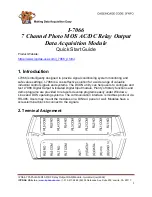
SolENoid, piloT vAlvE & REGUlAToR SERviciNG –
All ElEcTRic viH ModElS
Caution! Electric valve-in-head rotors are connected to pressurized main or sub-main piping. This pressurized
piping must be depressurized before servicing the rotor. This rotor will activate (turn on) if Solenoid is loosened
or if Solenoid is removed or if Pilot Valve is removed or the supply tubing is cut. The velocity of the water stream
and flows emitted from the rotor are high. Bodily injury can occur if the water stream hits the face, eyes, ears or
other body parts. Keep head and body parts way from water stream. Wear proper eye protection and use the
designated tools when servicing these rotors. Whenever possible, keep head and body parts away from the top of
the rotor.
ToolS needed
• Phillips Screwdriver
• Flat Blade Screwdriver
• Hunter Wrench – PN 471720
• Tubing Clamp, Locking Forceps or ¼” Tube Retainer (to close pilot valve’s inlet tubing)
• Side Cutters (Dikes) or Blade Cutter (to cut tubing)
ACCeSS To flAnge CoMPARTMenT CoMPonenTS
Using a Phillips screwdriver, remove the two stainless steel screws that retain the flange compartment’s lid (fig 124). A slot is
located adjacent to the on-off-auto selector at the edge of the flange lid. Use a bladed screwdriver to pry the flange lid up
(fig 125). Set the flange lid and screws aside. Factory installed flange compartment lids have a large recessed area that can
be used for the application of yardage marker placards (fig 126). An optional flange compartment lid is available with a raised
area for paint-filled engraving of the yardage marker (fig 127). this optional version is only available as a replacement part.
FIg 124
FIg 126
FIg 125
FIg 127
Fig 123
Fig 124
Fig 125
Fig 126
Fig 125
Fig 126
Fig 123
Fig 124
41
Summary of Contents for G835
Page 2: ......
Page 21: ...Fig 47 Fig 49 Fig 50 Fig 48 Fig 48 Fig 47 Fig 48 Fig 47 18...
Page 57: ...54...















































